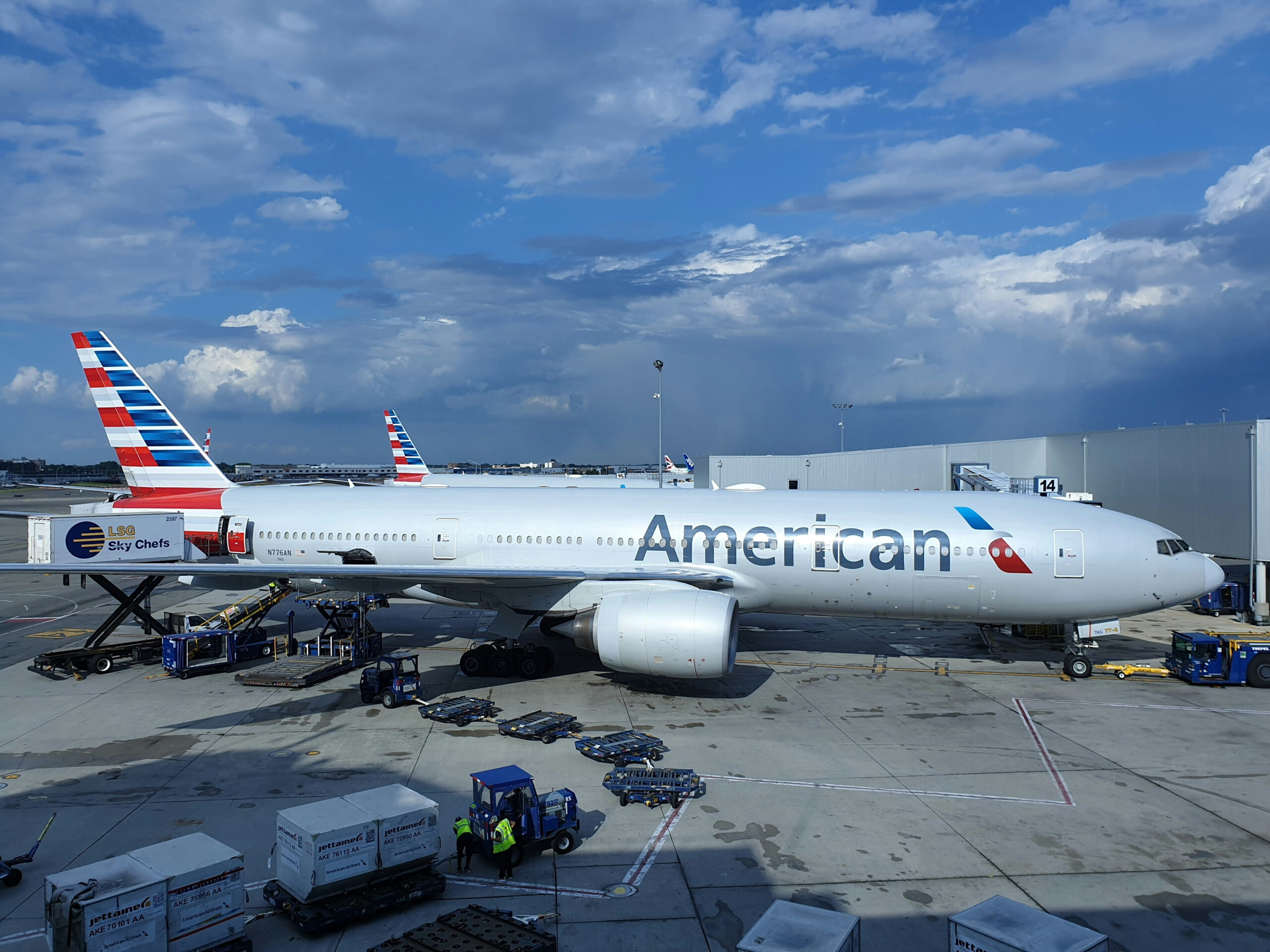Overview
• Operator: American Airlines
• Aircraft Model: Boeing 777-300ER
• Registration: N717AN
• Flight Number: AA-735
• Route: London Heathrow (UK) → Charlotte (USA)
• Date: 11 February 2025
• Occupants: Not specified
• Nature of Incident: Runway excursion during taxi after landing
Incident Summary
American Airlines flight AA-735, a Boeing 777-300ER (N717AN), landed safely on Charlotte Douglas International Airport’s runway 36R after a transatlantic flight from London Heathrow. While vacating the runway via taxiway A at an acute angle, the left main landing gear veered onto soft ground, causing a minor runway excursion. The aircraft was able to continue taxiing to the apron, and no injuries were reported.
Sequence of Events
1. Landing & Deceleration:
• The aircraft landed safely on runway 36R and decelerated normally.
2. Taxiway Maneuver:
• The crew turned left onto taxiway A, which connects the runway at an acute angle.
• During the turn, the left main landing gear left the paved taxiway surface and rolled onto soft ground.
3. Runway Excursion:
• The aircraft’s left wheels went into the grass, but no structural damage was reported.
• The aircraft continued taxiing to the apron without further incident.
4. FAA & Airport Response:
• The FAA confirmed the incident, stating: “Aircraft landed and while turning onto taxiway, left wheel went into the grass, Charlotte, NC.”
• The aircraft was taken out of service and remained on the ground for over 22 hours after the event.
Investigation & Contributing Factors
1. Acute Taxiway Angle
• Taxiway A at Charlotte Douglas International Airport connects runway 36R at an acute angle, which increases the risk of misjudged turns, especially for large aircraft like the Boeing 777-300ER.
2. Possible Contaminated or Soft Ground
• The incident occurred in February, and seasonal wet or soft ground conditions may have contributed to the main gear sinking.
• If recent rainfall softened the ground, the weight of the Boeing 777-300ER (~350,000 kg at landing) could have caused the gear to sink slightly.
3. Taxi Speed & Steering Input
• The crew may have applied excessive nose wheel steering while making the sharp turn, leading to misalignment of the main gear.
• If the taxi speed was too low, differential braking and thrust vectoring would have been less effective in maintaining precise directional control.
Safety Recommendations & Preventative Measures
✅ Review Taxiway Design & Clearances
• Airports should assess acute-angle exits for widebody aircraft and consider alternative high-speed exits to prevent similar excursions.
✅ Crew Awareness of Taxiway Geometry
• Flight crews operating large aircraft should be briefed on the risks of turning at acute angles, particularly on unfamiliar or wet taxiways.
✅ Improved Ground Signage & Guidance
• Enhanced taxiway markings and lighting could assist crews in judging safe turn radii, preventing main gear misalignment.
✅ Assess Ground Conditions for Taxiing Aircraft
• Airport operations should ensure taxiway shoulders and soft ground areas are stable, particularly after rainfall or winter conditions.
Aircraft Status & Operational Impact
• The aircraft, N717AN, remained on the ground in Charlotte for at least 22 hours following the incident.
• American Airlines likely conducted thorough inspections before returning the aircraft to service.
• No cancellations or significant flight disruptions were reported.
Disclaimer
This report is based on available information as of 12 February 2025. While every effort has been made to ensure accuracy, the completeness of the details cannot be guaranteed. If you are the rightful owner of any referenced materials and wish them removed, please email takedown@cockpitking.com.
